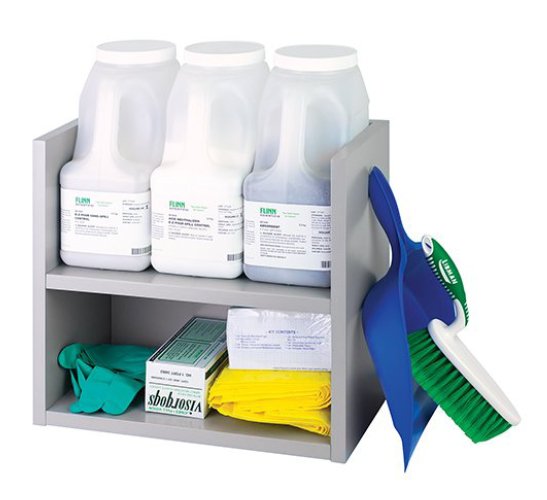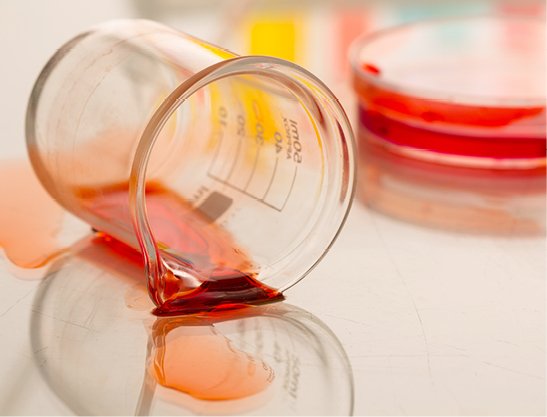Top 12 Ways to Prevent Chemical Spills
Flinn Staff Scientist
Engaging and challenging lab activities are crucial to the science curriculum. To do these activities effectively and safely, safety needs to always be on your mind. Here are some tips to help you to be the safest you can be while working in the lab.
Accidents of all kinds can occur in the lab, such as chemical spills, personal injuries, and fires. Most times, chemical spills occur unintentionally and can affect you or your gadgets in the laboratory.
Included below are some effective guidelines that every science teacher can work with to prevent chemical spills in the laboratory. These guidelines have been classified into three categories: general guidelines, chemical storage, and safe laboratory practices.
General Guidelines
- Purchase, store and dispense chemicals from the smallest size bottles For example, do not order or dispense a chemical from a 2-L bottle if each student only needs 1–2 mL.
- Purchase, store and dispense chemicals in unbreakable plastic or PVC-coated glass Volatile and/or toxic chemicals should never be stored in uncoated glass bottles. Purchase concentrated acids in PVC-coated glass bottles for increased safety.
- Always use secondary containment, such as a Chem-Saf ™ bag (heavy-duty plastic bag) or a Saf-Stor™ can (unused metal paint can), when storing reactive or highly toxic chemicals.
Examples of chemicals that should be purchased and stored in Saf-Stor cans include sodium, lithium, calcium carbide and sodium peroxide.

Chemical Storage
- Store flammable liquids in a flammables cabinet and store acids in a dedicated wooden corrosives cabinet. Flammables and corrosives cabinets should have a 2"-high, liquid-tight trough to contain spills and provide secondary containment.
- Do not store chemicals on the floor, in aisles, stairwells or fume hoods, on laboratory benches or anywhere a bottle could be knocked over. Always store chemicals at or below eye level.
- Attach two-inch shelf lips to all chemical storage shelves to prevent bottles from rolling off the shelves. Make your own shelf lips from wood molding or purchase chemical-resistant plastic shelf lips.
- Check chemical containers periodically for rust, corrosion and leakage. Some chemicals will absorb moisture or react with air and release heat in the process, causing containers to expand, deteriorate and possibly break.

Safe Laboratory Practices
- Downsize lab activities to the smallest scale that is effective for demonstrating a principle or teaching a Use microscale experiments whenever possible.
- Perform experiments using corrosive, toxic or flammable chemicals in work areas designed to contain accidental releases and prevent exposure. Place secondary containment trays in a fume hood.
- Dispense chemicals from central locations, and place bottles on plastic, chemical-resistant trays or absorbent chemical pads.
- Always use a spatula and a weighing dish or weighing paper when weighing out chemicals.
- Recap chemical bottles immediately after use to reduce the risk of spillage if a bottle is accidentally tipped over.
Following these suggestions will help you reduce the number of minor spills and will also greatly diminish the probability of a major spill.
Spill control materials are available from Flinn Scientific. Watch this video on chemical spill control to learn more.


